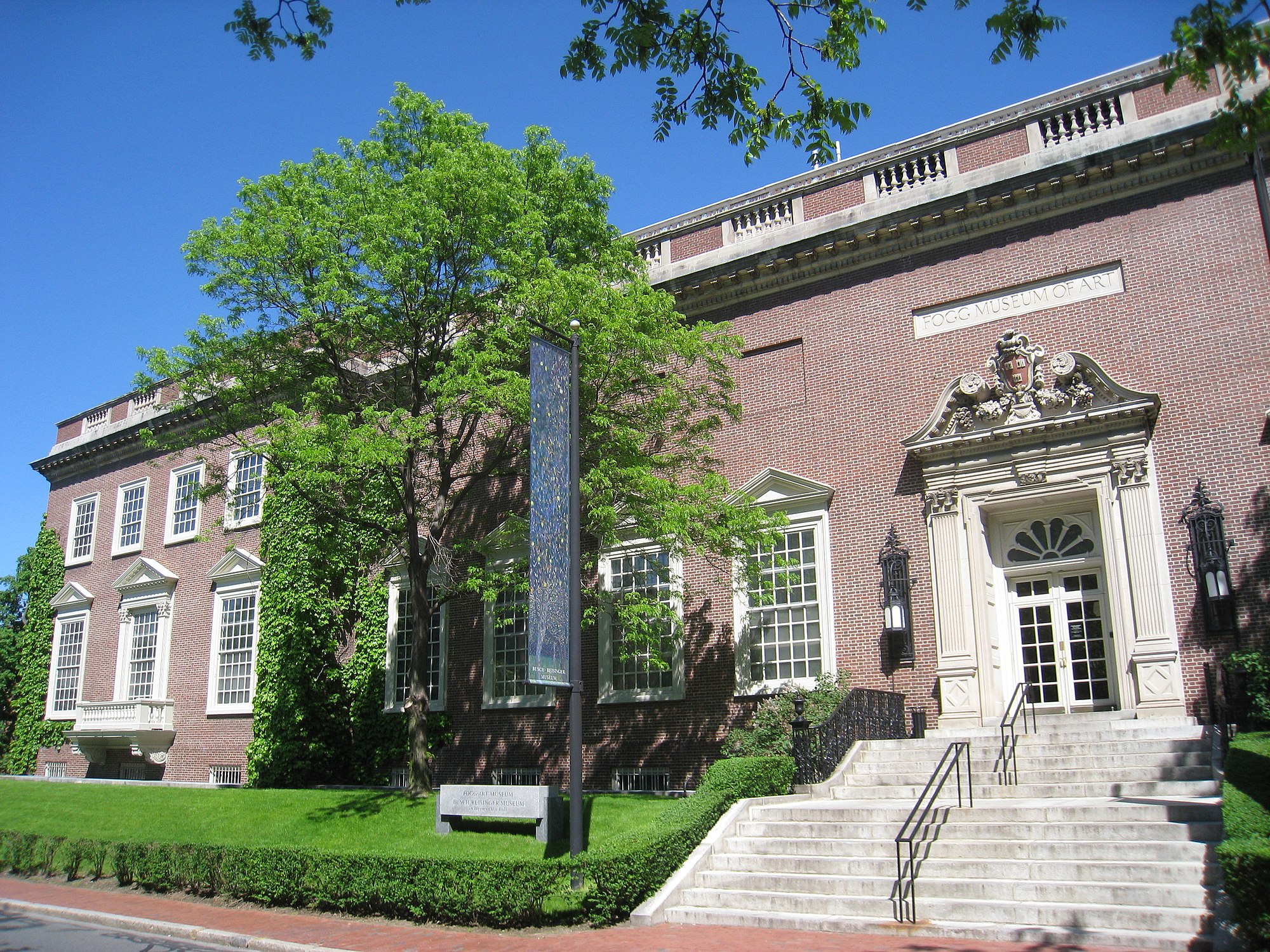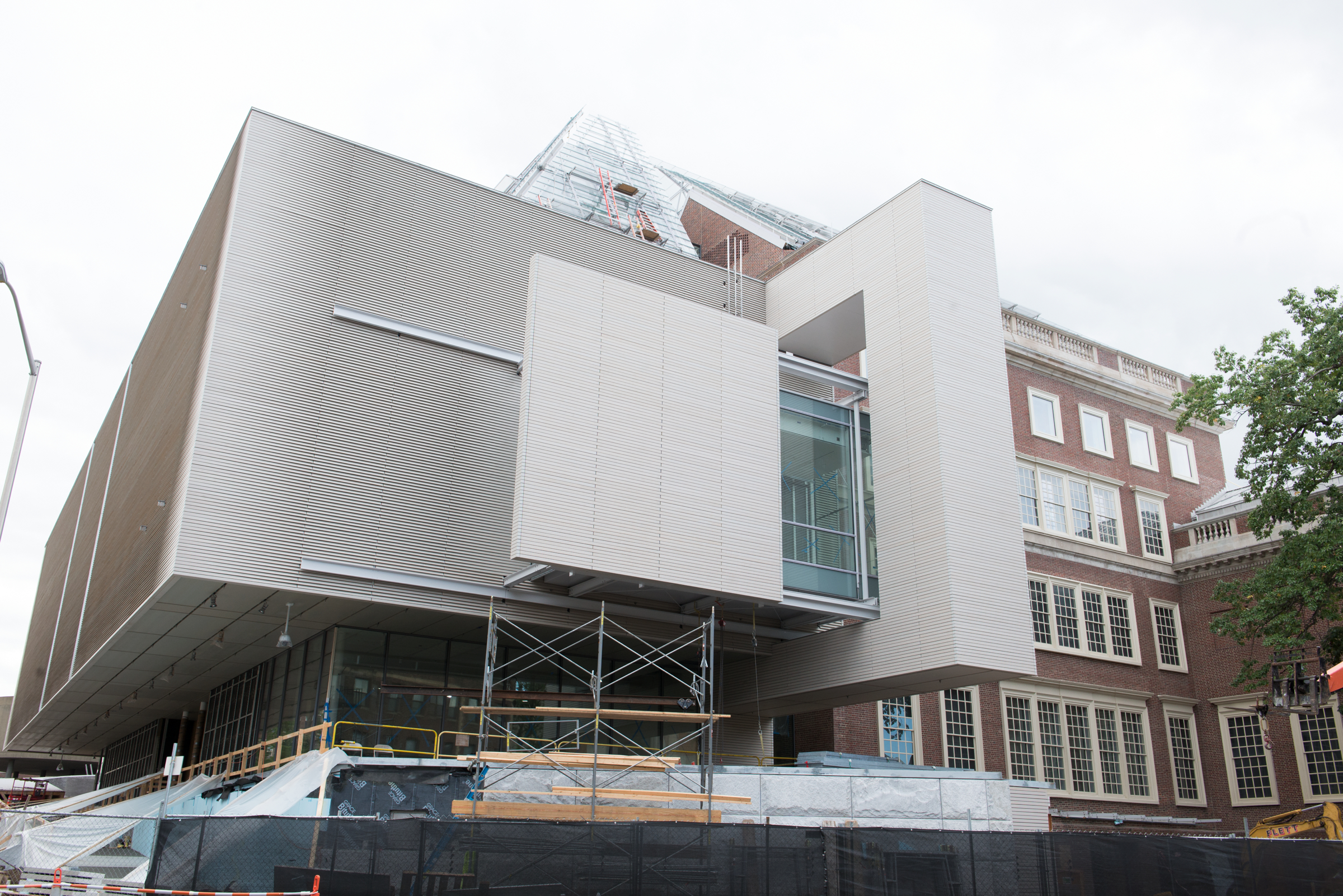Discover The Fogg Museum - Harvard's Art Gem
When you think about places where history and art come together in a truly special way, the Fogg Museum at Harvard University pretty much comes to mind. It's a place that holds so many stories, not just within its walls but also through the amazing art it keeps safe. This museum, a key part of the larger Harvard Art Museums, has been around for a very long time, offering people a quiet spot to connect with pieces from different eras and places.
The Fogg Museum, you see, is more than just a building full of art; it's a living part of Harvard's long history, playing a big role in how art is studied and understood. It has a rather interesting story of how it came to be, how it grew, and how it continues to welcome everyone who walks through its doors. From very old paintings to more recent creations, the Fogg has gathered a truly remarkable group of items that tell tales from centuries past.
So, if you're ever in Cambridge, or just curious about places that hold significant cultural treasures, the Fogg Museum is a spot worth knowing about. It’s a welcoming place, open to everyone, and offers a chance to see some truly wonderful things up close. We will take a look at what makes this museum so special, from its beginnings to the many different kinds of art you can find there.
Table of Contents
- A Look Inside the Fogg Museum
- What Kinds of Art Can You See at the Fogg Museum?
- More Than Just Pictures on a Wall at the Fogg Museum
- How Did the Fogg Museum Come to Be?
- The Fogg Museum's Place in Research
- Have There Been Any Big Surprises at the Fogg Museum?
- Planning Your Visit to the Fogg Museum
- What Makes the Fogg Museum So Special?
A Look Inside the Fogg Museum
The Fogg Museum, you know, is a very important piece of the Harvard Art Museums. These museums are all part of Harvard University itself, and they work together to bring art and learning to people. It's a bit like a big family of art spaces, each with its own focus but all living under one roof.
There are, in fact, three museums that make up this bigger group: the Fogg, the Sackler Museum, and the Busch-Reisinger Museum, though the text mostly talks about the Fogg and Sackler. All of these different parts are now found in a single building, which makes visiting them quite easy. Each individual museum, however, still keeps its own original purpose and what it cares about most, which is pretty cool.
The Fogg, which first opened its doors in 1895, is the very oldest of these museums. It's really well-known for its truly amazing collection of Western art. This collection spans a very long period of time, from the Middle Ages all the way up to the present day, so there's a lot to see, you know.
- How To Set Up Inflatable Hot Tub
- Who Dies In Harry Potter 6
- Does Taylor Swift Smoke Pot
- 70s Hairstyles
- Who Is Lucas Adams Mom
What Kinds of Art Can You See at the Fogg Museum?
When you walk through the Fogg Museum, you'll find yourself surrounded by a wide range of Western art. This includes paintings that tell stories from long ago, sculptures that stand strong and silent, and even photographs that capture moments in time. It's a rather diverse group of items, showing how art has changed and grown over centuries.
The museum's body of works has, in fact, grown quite a bit over the years. It's particularly famous for its collections of Western paintings, sculptures, photographs, and prints. You'll also see decorative arts and drawings, some of which go back as far as the Middle Ages, coming all the way up to what artists are creating today. It’s a very complete look at art history, if you ask me.
Just a little while ago, I actually got to go back to the Fogg Art Museum, and I really liked its wonderful group of Italian medieval paintings. I saw some truly moving paintings with religious themes from the medieval period, made by artists like the Master of Camerino from the 13th century, Bernardo Daddi, Luca di Tommè (who made a processional cross), the Master of Offida, the Master of Saint Cosmas and Damian (also from the 13th century), Simone Martini, Ambrogio Lorenzetti, and Taddeo Gaddi. It was, you know, quite an experience to see such old and important works up close.
More Than Just Pictures on a Wall at the Fogg Museum
One of the best things about the Fogg Museum is that it's completely free to get in and open to everyone who wants to visit. This means that anyone can come and enjoy the art without having to worry about a ticket price, which is pretty neat. They also offer audio guides, which can help you learn more about the art as you walk around, and there are always new exhibits to check out, plus reviews of the artworks.
After you've spent some time looking at the art, you can, like, grab a coffee or a little snack at Jenny's Cafe, which is right there. Or, if you feel like it, you can look through the many unique gifts in the museum shop. It's a nice way to take a break before you go on to explore the more than 50 galleries of art spread across three floors. There’s so much to see, it’s almost unbelievable.
The Harvard Art Museums, including the Fogg, are really dedicated to making sure everyone feels welcome and that they belong there. They want to create a place where every single visitor feels respected, and they ask for your help in making that happen. So, you know, it’s a very friendly and open place for everyone.
How Did the Fogg Museum Come to Be?
The very first Fogg Art Museum opened its doors in 1895, right on the spot where Canaday Hall stands today. It was, you know, a very important moment for art at Harvard. There was also a building called Hunt Hall, which was meant for art history classes, but it apparently wasn't quite big enough even for that purpose.
Over the years, the Fogg Museum's group of works has grown quite a lot. It has become very well-known for its collections of Western paintings, sculptures, photographs, and prints. You can also find decorative arts and drawings that go back as far as the Middle Ages and come right up to the present day. It's a truly amazing collection that has just grown and grown.
In early September, some reporters were invited to take a look at the new Harvard Art Museums building that had gone up at 32 Quincy Street. The front of the old Fogg Museum still stands, facing Sever Quadrangle, which is a nice touch. But the museum behind it, which was still very much being built and didn't open again until the fall of 2014, had been completely made new at a cost that was thought to be around $350 million. It was, you know, a very big project.
The Fogg Museum's Place in Research
The Harvard Art Museums, which the Fogg is a part of, also include four research centers. These centers work behind the scenes, you know, helping to study and understand art in a very deep way. They include things like the Archaeological Exploration of Sardis, which started in 1958, and the Center for the Technical Study of Modern Art, which began in 2002. There's also the Harvard Art Museums Archives and the Straus Center for Conservation and Technical Studies.
Since the Fogg Art Museum first started in 1895, its library has always been there to help everyone who needed it. This includes the teaching staff, the people who work at the art museum, and students at all levels. It also helps researchers and historians, providing them with the materials they need to do their important work. It's, like, a really central part of the museum's purpose.
As we looked forward to the new Harvard Art Museums opening on November 16, an art historian named Kathryn Brush took some time to think back on the Fogg Museum's history. She saw it as a pioneer in how art research and teaching developed around the world. Brush, who is a professor of art history at the University of Western Ontario in Canada, should, you know, definitely know about this, having spent countless hours at the Harvard Art Museums herself.
Have There Been Any Big Surprises at the Fogg Museum?
The Fogg Museum has, in a way, seen some truly remarkable things happen over the years. One such event was an extraordinary gift of 62 prints and two paintings by Edvard Munch, a very famous artist, along with one print by Jasper Johns. This amazing donation came from the collection of Philip A. Straus and was announced by the Harvard Art Museums on a Tuesday. It was, you know, a very big deal for the museum.
Then there's the story of a December night in 1973. Five armed men, believe it or not, broke into Harvard's Fogg Art Museum and took more than 6,000 old Greek and Roman coins. Fifty years later, the museum is still working to get those coins back. It's a rather long and ongoing effort, showing just how important these items are to the museum and its history.
Planning Your Visit to the Fogg Museum
If you're thinking about visiting the Fogg Museum in Cambridge, it's a good idea to check their visiting hours first. There's a list that shows the hours for each day, and the hours for the current day are usually highlighted. You know, it's just helpful to be prepared.
It's also important to remember that opening hours might be different on special days or holidays than what you see on the regular schedule. So, you know, a quick check before you head out can save you any trouble. The museum is generally very welcoming, and knowing the hours just makes things a little easier for your trip.
What Makes the Fogg Museum So Special?
The Fogg Museum, as part of the Harvard Art Museums, invites everyone to come and see the works on display from one of the biggest and most well-regarded groups of art in the United States. It's a place where you can really connect with art from different times and places, which is pretty cool.
As brilliant as any of the works in the Harvard Art Museums' galleries is, apparently, a rainbow of small glass jars on the building's fourth floor. This little detail shows how much care goes into everything there, even the things that aren't strictly art. It's a bit of a hidden gem, if you ask me.
The Harvard Art Museums are committed to making a place where everyone feels included and like they belong. They really want to make sure that every person who comes to visit feels welcomed and respected, which is a very important goal. So, you know, it’s a very thoughtful place for all.

Fogg Museum | Sartle - Rogue Art History

Thirsty, Arty Thursday | News | The Harvard Crimson

A tour of the reimagined Fogg art museum | Harvard Magazine